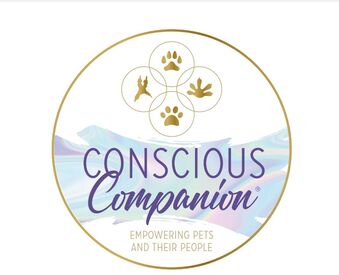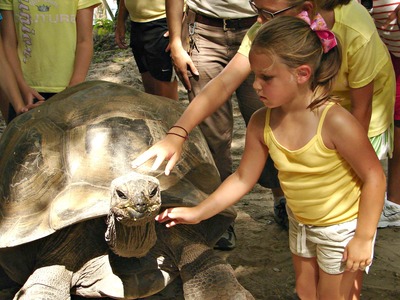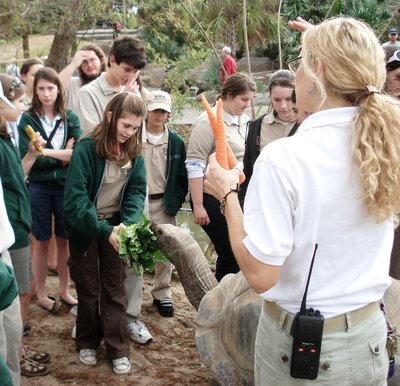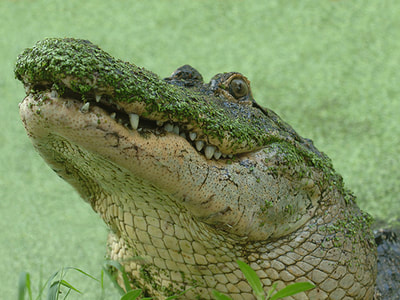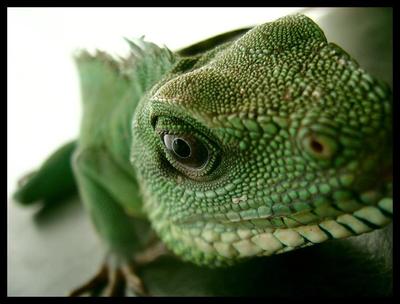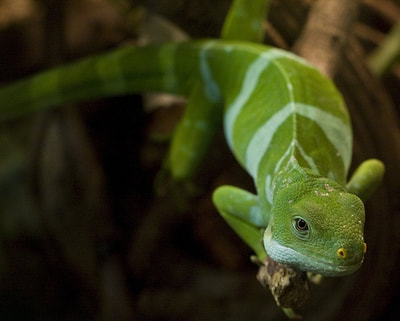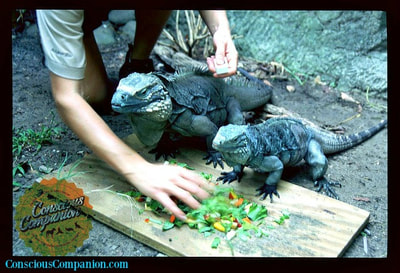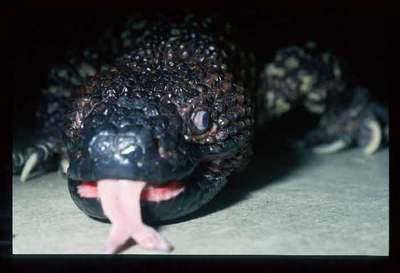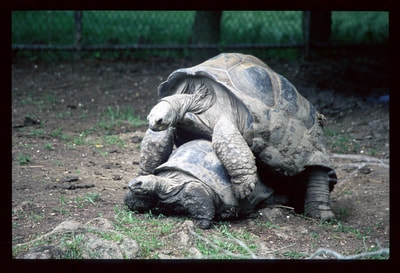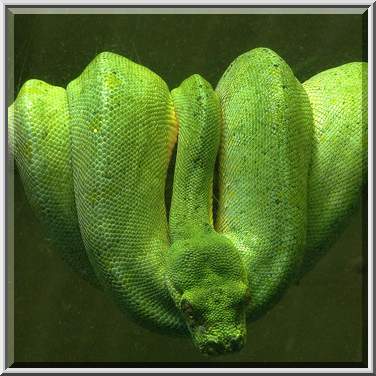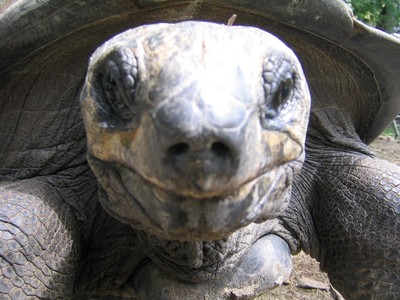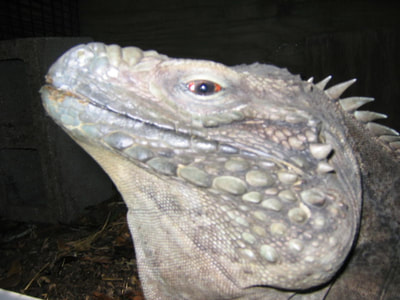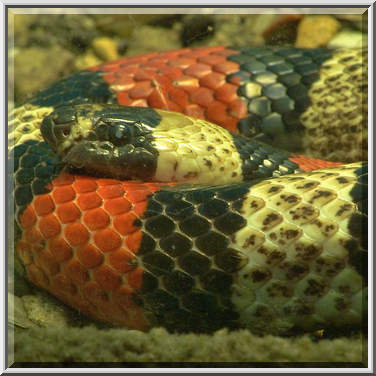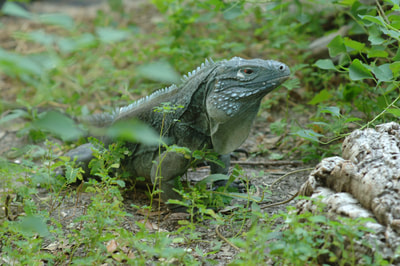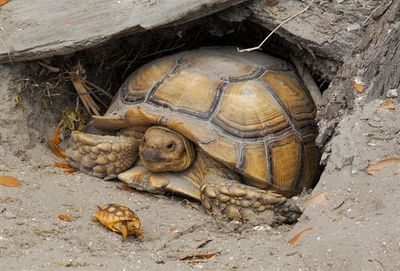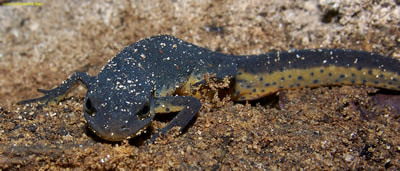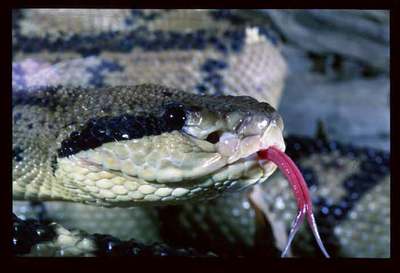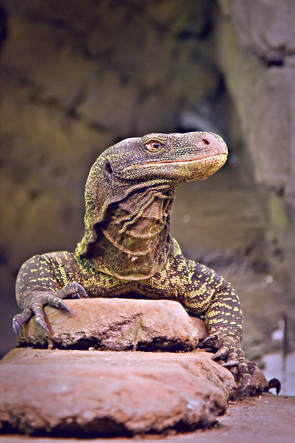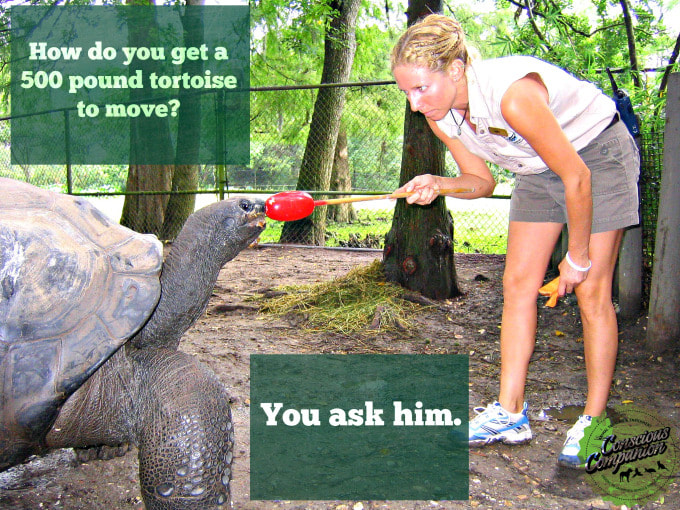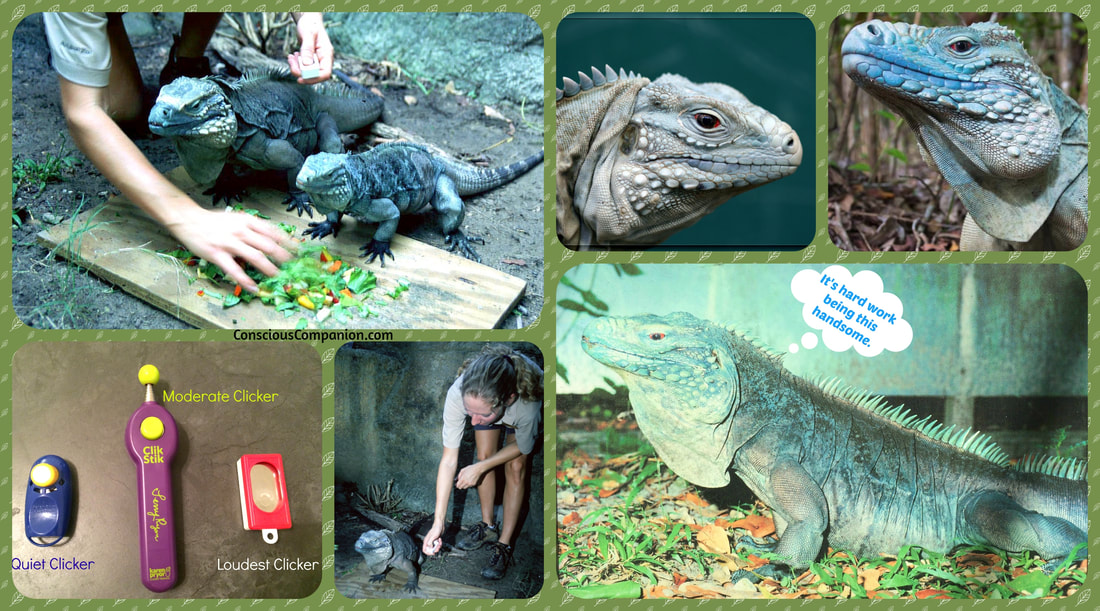We are the earth, made of the same stuff; there is no other, no division between us and "lower" or "higher" forms of being. - Estella Lauder
Herpetology Help
Conscious Companion is not new to the world of herpetology. Reptiles and amphibians have been my favorite friends since I was a child. Decades later, when I began my career as a naturalist, I started working with snakes, lizards, turtles, tortoises, frogs and toads. I was shocked to discover how clever, sensitive, and incredibly amazing each of them were! All reptiles and amphibians are all brilliant beings who deserve respect. Below are just a few of my favorite species that have taught me much over the years ...
Force-Free Training for Reptiles and Amphibians!
Reptile and Amphibian Issues that Conscious Companion Assesses and Teaches You How to Implement in your home or facility:• Husbandry Issues
• Enclosure Design and Maintenance • Fearful Behavior • Stress-free Grooming (nail trims, etc.) • Training and Enrichment
|
Listen to a brief interview that we provided for PPG World Services, where we discuss working with Giant Tortoises and what these gentle giants taught us all!
Clicker Training Leaping Lizards!
🔶Question: How do you get an aggressive animal to sit calmly?
🔷You calm yourself & clicker train.
That's what a food-aggressive and highly territorial leaping lizard taught me.
🔵
Hear this, friends: Any animal, especially an aggressive one, has the power to teach.
🔵
One aggressive critter in particular taught me much about how to transform aggression into trust.
This soul was one of the most aggressive animals I had ever worked with.
He was was covered in scales and he was blue.
🔵
He was literally the color blue, but that was also his name. Blue did not like people in his space. And he was very impatient at feeding times. Rather than waiting for his food, he would race over to you, leap up, and rip the food tray out of your hands. If you were lucky, you got away unscathed. Needless to say, working with Blue and his "roomate" was very scary for everyone.
... Until one fated day: The science of learning entered the picture to teach Blue how to make new choices.
Instead of being attacked, bitten, scratched, and terrified daily, we became safe and secure thanks to calmly clicking.
🔵
The collage below highlights two critically endangered Blue Iguanas. These are snapshots of teaching both the male (Blue) and female (Cooper) to station.
🔹Together they learned “manners at meal times” through clicker training.
🔹Together they learned “manners at meal times” through clicker training.
By teaching them individually how to “station” and “wait” calmly for their meals, we eliminated food aggression and territorial issues in the male. This resulted in his mate, Cooper, learning to feel safe around Blue; Cooper was finally able to eat her meals without being challenged and intimidated by Blue. This allowed Cooper to feel at ease, which enabled her appetite to return. Cooper could then put on the necessary weight to be healthy and strong. This was crucial because they were a breeding pair, set up to ensure the success of this critically endangered species' survival.
🔹After teaching Blue & Cooper to station, we trained them for medical purposes.
Blue and Cooper both learned how to give blood voluntarily through their tails. We never restrained them! This allowed us to collect blood from them without stress. (Stress during a blood draw can adversely affect the blood levels.) To monitor the health and well-being of Blue and Cooper, ultrasound checks and blood and urine analysis was critical.
🔹Force-Free medical care also affected our relationship with them, and with each other.
It was amazing to see how much trust you could build with an animal who is naturally afraid (and sometimes very aggressive) toward humans! Through force free (choice-based) training Blue and Cooper became a healthy and happy breeding pair. They also become two of my best reptile friends.
💞
If a leaping lizard can learn to do this, just think about what your companion animal is capable of!
🔷You calm yourself & clicker train.
That's what a food-aggressive and highly territorial leaping lizard taught me.
🔵
Hear this, friends: Any animal, especially an aggressive one, has the power to teach.
🔵
One aggressive critter in particular taught me much about how to transform aggression into trust.
This soul was one of the most aggressive animals I had ever worked with.
He was was covered in scales and he was blue.
🔵
He was literally the color blue, but that was also his name. Blue did not like people in his space. And he was very impatient at feeding times. Rather than waiting for his food, he would race over to you, leap up, and rip the food tray out of your hands. If you were lucky, you got away unscathed. Needless to say, working with Blue and his "roomate" was very scary for everyone.
... Until one fated day: The science of learning entered the picture to teach Blue how to make new choices.
Instead of being attacked, bitten, scratched, and terrified daily, we became safe and secure thanks to calmly clicking.
🔵
The collage below highlights two critically endangered Blue Iguanas. These are snapshots of teaching both the male (Blue) and female (Cooper) to station.
🔹Together they learned “manners at meal times” through clicker training.
🔹Together they learned “manners at meal times” through clicker training.
By teaching them individually how to “station” and “wait” calmly for their meals, we eliminated food aggression and territorial issues in the male. This resulted in his mate, Cooper, learning to feel safe around Blue; Cooper was finally able to eat her meals without being challenged and intimidated by Blue. This allowed Cooper to feel at ease, which enabled her appetite to return. Cooper could then put on the necessary weight to be healthy and strong. This was crucial because they were a breeding pair, set up to ensure the success of this critically endangered species' survival.
🔹After teaching Blue & Cooper to station, we trained them for medical purposes.
Blue and Cooper both learned how to give blood voluntarily through their tails. We never restrained them! This allowed us to collect blood from them without stress. (Stress during a blood draw can adversely affect the blood levels.) To monitor the health and well-being of Blue and Cooper, ultrasound checks and blood and urine analysis was critical.
🔹Force-Free medical care also affected our relationship with them, and with each other.
It was amazing to see how much trust you could build with an animal who is naturally afraid (and sometimes very aggressive) toward humans! Through force free (choice-based) training Blue and Cooper became a healthy and happy breeding pair. They also become two of my best reptile friends.
💞
If a leaping lizard can learn to do this, just think about what your companion animal is capable of!
You can learn more about Leaping Lizards and How to Train Your Dragon here!
“Use your voice for kindness, your ears for compassion, your hands for charity, your mind for truth, and your heart for love.” --Anonymous
